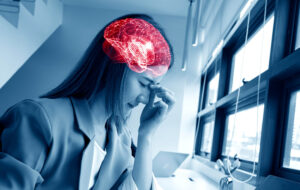Computer Tool to Simulate Pharmacological Treatments in Patients with Disorders of Consciousness

La integración de organismos vivos y materiales biodegradables en la arquitectura urbana redefine la sostenibilidad de las ciudades.
A team of researchers from various institutions, including CONICET and renowned universities such as Sorbonne and Oxford, has recently developed an innovative computer-based tool. This tool is designed to simulate pharmacological interventions in patients suffering from disorders of consciousness, opening new possibilities for the treatment of these complex medical conditions.
Disorders of consciousness occur in patients who, after experiencing a brain injury, hemorrhage, or anoxic episode, exhibit reduced levels of awareness. These conditions are classified into states such as the minimally conscious state (MCS) and unresponsive wakefulness syndrome (UWS). Patients in MCS may show signs of responsiveness to stimuli, such as tracking visual objects or reacting to pain. In contrast, those in UWS, though their eyes are open, display no signs of awareness or voluntary movement. The complexity of these conditions limits treatment options and often raises ethical questions regarding the continuation of life support.
The recent study, published in the journal Communications Biology, details how scientists developed a computational model that replicates the brain activity of these patients. This allows not only for a better visualization of how brain connections are affected by such disorders but also enables the simulation of various pharmacological treatments that could potentially enhance patients’ levels of consciousness.
Development of the Computational Model
The study analyzed brain activity in 34 individuals, including patients in different states of consciousness and healthy controls. Using functional Magnetic Resonance Imaging (fMRI), the researchers mapped the activity and connectivity of nearly 100 brain regions. “We were able to realistically model how these regions interact, both in healthy conditions and in cases affected by disorders,” explained Iván Mindlin, one of the lead authors of the study.
This model served as a platform to simulate the effects of pharmacological treatments targeting different neuroreceptors, such as serotonergic and opioid receptors. By applying machine learning techniques, the researchers visualized the effects of these simulations, allowing them to observe how certain drug interventions might improve patients’ states of consciousness.
Yonatan Sanz Perl, the study’s lead director, emphasized the tool’s significance: “Not only did we replicate brain activity, but we also identified pharmacological interventions that could have a positive impact. This enables the exploration of new therapies before they are tested in clinical trials, which are often costly and time-consuming.”
Implications and Simulation Potential
Simulating treatments in a controlled environment not only reduces the risks associated with human experimentation but also allows scientists to test efficacy and safety more efficiently. This could significantly advance the development and evaluation of new medical treatments.
The potential of this tool goes beyond disorders of consciousness. The researchers suggest that the methodology could be applied to other neurological conditions such as Alzheimer’s disease, psychosis, and even epilepsy. Enzo Tagliazucchi, another co-author of the study, pointed out that having a validated model enables researchers to explore multiple hypotheses and treatment strategies in a virtual environment before moving to patient-based trials.
Although this model provides a novel perspective on treating disorders of consciousness, it is crucial that the findings be confirmed through clinical trials to ensure their efficacy and safety in real patients. The transition from virtual simulation to clinical practice will require a careful, methodical approach and continued collaboration between researchers and healthcare professionals.
This development marks a significant step forward in the understanding and treatment of consciousness disorders, paving the way for a more innovative and evidence-based approach in neurological medicine.








